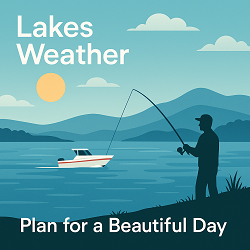Arlington, WA Weather Forecast and Current Conditions
Current Conditions From Nearby Local Station

Feels Like 53°F
at
Point Forecast at a Glance







7-Day Temperature Trend
Week Ahead Summary
Cooling trend continues with high temperatures dropping from 56°F to 44°F. Unsettled weather expected with rain likely on at least 7 days.
Climate Context
This week's forecast shows temperatures running 6°F above the historical average for December. Normal highs for this period are around 44°F with lows around 33°F.
This Date in Weather History
1952 - Trace of snow or sleet at or near Pensacola, Crestview, DeFuniak Springs, Quincy, Carrabelle, Tallahassee, St. Marks, Monticello, Madison, Mayo, Live Oak, Lake City, Glen St. Mary, and Hilliard in Florida. Frozen precipitation occurred before noon at most points, but happened in the afternoon at Mayo and Lake City and near Hilliard. Temperatures were above freezing and snow or sleet melted as it fell.
Arlington, WA 7 Day Weather Forecast Details
Sunday Dec 14

Day: A 50 percent chance of rain. Mostly cloudy, with a high near 56. South southeast wind 9 to 11 mph, with gusts as high as 23 mph.

Night: Rain. Steady temperature around 53. Southeast wind 10 to 14 mph, with gusts as high as 32 mph. Chance of precipitation is 100%. New precipitation amounts between a tenth and quarter of an inch possible.
Monday Dec 15

Day: Rain before 1pm, then showers and possibly a thunderstorm between 1pm and 4pm, then rain and possibly a thunderstorm after 4pm. High near 59. Breezy, with a south wind 14 to 22 mph, with gusts as high as 39 mph. Chance of precipitation is 100%. New rainfall amounts between a quarter and half of an inch possible.

Night: Rain. Low around 42. West southwest wind 6 to 10 mph becoming south southeast in the evening. Winds could gust as high as 21 mph. Chance of precipitation is 90%. New precipitation amounts between a quarter and half of an inch possible.
Tuesday Dec 16

Day: Rain. High near 52. South southeast wind 9 to 13 mph, with gusts as high as 22 mph. Chance of precipitation is 100%. New precipitation amounts between a quarter and half of an inch possible.

Night: Rain. Low around 39. Chance of precipitation is 100%. New precipitation amounts between a half and three quarters of an inch possible.
Wednesday Dec 17

Day: Rain. High near 46. Chance of precipitation is 80%.

Night: Rain. Cloudy, with a low around 38.
Thursday Dec 18

Day: Rain. Cloudy, with a high near 47.

Night: Rain. Cloudy, with a low around 36.
Friday Dec 19

Day: Rain. Cloudy, with a high near 45.

Night: Rain. Cloudy, with a low around 35.
Saturday Dec 20

Day: Rain. Cloudy, with a high near 44.
About Arlington, WA
Content from Wikipedia, licensed under CC BY-SA 3.0.
How We Provide Better Local Weather
Current conditions: We use the nearest available station to your location - including professional MESONET/MADIS and local weather stations - often miles closer than regional airports.
Forecasts: National Weather Service point forecasts predict for your specific area, not broad regional zones, making them far more relevant to your location.



